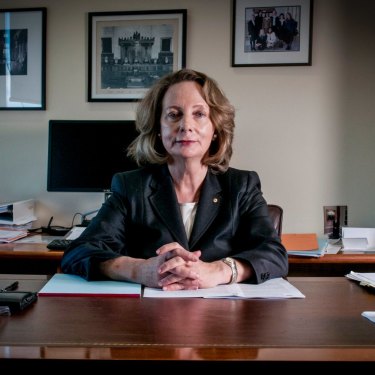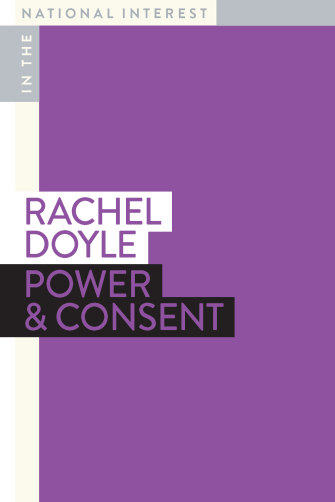By Rachel Doyle
On the morning of June 22, 2020, a friend texted me two words: pretty explosive. Below his message was a link to an online newspaper article.
The Chief Justice of the High Court of Australia, Susan Kiefel, had just issued a statement. In a few terse paragraphs, an unprecedented era of soul-searching by the legal profession was ushered in, beginning with: “The High Court was advised last year of allegations of sexual harassment against a former Justice and we immediately acted to commission an independent investigation.”
The investigation had taken some months to complete, and the statement went on to confirm that its subject was the Honourable Dyson Heydon AC QC. The inquiry had found that “six former Court staff members who were Judges’ Associates were harassed by the former Justice”.
The Chief Justice’s statement continued:
The findings are of extreme concern to me, my fellow Justices, our Chief Executive and the staff of the Court. We’re ashamed that this could have happened at the High Court of Australia.
We have made a sincere apology to the six women whose complaints were borne out. We know it would have been difficult to come forward. Their accounts of their experiences at the time have been believed. I have appreciated the opportunity to talk with a number of the women about their experiences and to apologise to them in person.
I am familiar with this economical judicial style of writing. I’ve been a barrister for 25 years. I was an associate to a High Court judge from 1994 to 1995. Not one word is wasted; every phrase is infused with meaning.
I was rocked by the Chief Justice’s use of the phrase “We’re ashamed”. The pronoun ‘we’, and the ownership that conveys. Then there was the reference to shame, a feeling often provoked in victims of sexual harassment. Yet here was the nation’s most senior law officer saying that she felt shame because of what had happened at her court.
Then there was this: “We have made a sincere apology” – which, it is revealed later in the same passage, was (at least with respect to some of the women) an apology delivered to the complainants by the Chief Justice in person.
And then the sleeper at the end of that sentence, which described the former associates as the six women “whose complaints were borne out”. Two sentences later, the statement says: “Their accounts of their experiences at the time have been believed.”
There were no guarded references to ‘allegations’ or to ‘versions of events’ reported to management. No incantation of the refrain that it is not appropriate or possible to offer any commentary on ‘the ongoing situation’, because the matter is or might be before the courts.
Both in substance and in form, the Chief Justice’s statement was an example of how to respond with candour and how to be accountable.
At first, it seemed shocking that the investigation and its findings concerned six women. But again on reflection, perhaps this was perfectly explicable. No woman had felt able to come forward on her own, as a lone voice. But the six of them had found the courage to act as a group. This prompted many to describe the Heydon case as the law’s #MeToo moment.
Yet there is a crucial difference. The six associates did not go public with their allegations (which Dyson Heydon immediately denied, and continues to deny). They did not use social media to drop the story. Rather, they made their complaints to the High Court through a lawyer. They then maintained a careful silence throughout the course of the investigation. Following the investigation, it was the Chief Justice who broke the story.
By June 24, I had had an opinion piece published in the Herald and The Age. At the end of the article, I directly addressed the perpetrators: “To the members of the legal profession who persist in perpetrating sexual harassment. Stop it. You ought to be ashamed.”
Rachel Doyle says we need a safe and fair means for victims of the same harasser to identify each other, and we need a way for them to complain together which is more sophisticated and nuanced than the blunt tool of social media campaigns.Credit:John Woodstra
Almost immediately, my inbox began to fill with messages from barristers, solicitors, judges and legal academics. The emails came from men and women of all ages and levels of seniority within the profession. The prevailing theme was that the focus needs to be on the perpetrators. Many women wrote that they feel burdened and exhausted by the obligation to monitor and report sexual harassment. They feel crushed by the culture of silence. They just want it to stop.
Now, let’s get this bit out of the way. I know you want to know whether it has ever happened to me. I was an associate to a High Court judge in the 1990s. I have been in the law for over 25 years.
It has happened to me. A couple of times. I did not make a formal complaint either time. Let me tell you why.
The first time, I was in my early 20s. The incident occurred after the work Christmas party. It involved a request to sit on the lap of a male lawyer very senior to me. It was followed by an embarrassing declaration of a desire to kiss me, which I repelled.
An apology was delivered in person, the morning after the event. He came to the door of my office and said he had thought about his behaviour the previous night, realised he had done the wrong thing, and wanted to say he was embarrassed and sorry.
On the second occasion, I was about 30, and a junior barrister. The incident occurred early one evening, in a lift in the barristers’ chambers. I was leaving a function. He stood very close to me, backing me against the wall, and got so near that I could smell the booze. He said: “Look at you! I like your skin, I’d love to touch it, so soft.”
The lift doors opened.I stayed in the lift and yelled at his back: “I will call the Women Barristers’ Association about this tomorrow. You are a dead man!” He picked up his pace slightly and ambled out of my sight.
The next day I was contacted by a colleague, also a very senior male barrister. He said the man from the lift the previous evening had rung him. The intermediary had been asked to call me to see if I would be willing to meet so that the man could apologise to me personally, and failing that, he wanted to offer his apology through the intermediary.
What is striking about my experience is that on both occasions the perpetrator sought me out and within 36 hours had offered an apology which did not attempt to diminish the conduct, nor question my role in the events or seek to attribute blame elsewhere. Crucially, I experienced no ramifications in relation to my work or professional life.
I am lucky. I am also no fool. I know why both these events ended so well for me. I am confident, with an emphatic way of expressing myself. I also come from a legal family, and both men knew that.
Each of the events I have just described could have gone another way. When faced with a formal process and public opprobrium, the men might have denied it. I might have been asked what was I doing at the party, how much had I drunk, where had I been, why did I step into the lift when a man was already inside it.Such an experience may have caused me to doubt myself, to lose faith in the process, to lose patience, to lose time, to lose my mental health.
I’ve barely thought about either event since. I have not had to. Both men released me immediately from the burden of carrying the incident alone. They made the episode their problem, their burden.
I have to wonder, though, if I had not possessed the confidence which comes from having grown up in the law, would things have gone the same way? I doubt it.
The Chief Justice Susan Kiefel’s statement was an example of how to respond with candour and how to be accountable.Credit:Robert Shakespeare
The Australian Human Rights Commission’s (AHRC) 2020 Respect@Work report calls the current legal and regulatory system “simply no longer fit for purpose”. The report proposes a new model which needs to be “evidence-based, victim-focused and framed through a gender and intersectional lens”.
This all sounds very important. But it also leaves me a bit cold. I know that the desire to be “victim-focused” comes from a good place, but I can’t help wondering why the response ought not be perpetrator-focused. Surely we want to stop them doing what they do?
It may be too late to throw out the clunky definition of sexual harassment in the legislation, but it is not too late to overhaul the way we explain what is welcome conduct and what is not, and it is not too late to teach a new way of talking about consent.
Next, we must break down the culture of silence. We need a safe and fair means for victims of the same harasser to identify each other, and we need a way for them to complain together which is more sophisticated and nuanced than the blunt tool of social media campaigns.
We also ought to cultivate policies which require managers and co-workers to call out sexual harassment and be brave enough to confront harassers on the spot. But in addition, those in managerial positions and senior members of professions ought to be required to report occurrences of sexual harassment which they witness, or which are brought to their attention.
Whenever possible, the details of sexual harassment complaints which are found proven ought to be communicated within the workplace in which they occur. This will encourage more frank discussion about sexual harassment, and it has greater deterrent value.
We must make proof of allegations against recidivist sexual harassers easier. This will require a change to the way the courts apply the tendency rule of evidence – which prohibits, other than in limited circumstances, evidence of a defendant’s past conduct being relied on in aid of allegations currently before the court in civil litigation.
And surely we can all agree, by reason of the special position occupied by judges in the legal system and the administration of justice, that they simply can’t have a sexual relationship with their associates? Judges’ associates are usually in their 20s and either fresh out of law school or at a very early point in their career. The age and power imbalance renders the relationship worthy of deep suspicion.
But if the couple’s special connection is truly the “real thing”, then surely they can enjoy a consensual relationship – once the associate’s period of employment ends, usually after a year. While prime minister Turnbull was mocked for his “no bonking” rule for ministers and their staff, such a rule for the judiciary, in relation to their young associates, is quite different.
Judges administer the law; the law prohibits sexual harassment. Why can we not have a no touchy-
no-asky rule for judges in relation to their associates?
When I first read Helen Garner’s 1995 book The First Stone, it made me angry. In it, Garner described her shocked reaction on reading that a university student had complained to the police about the master of Ormond College touching her breast at a college dance. Garner and her friends, whom she described as “pushing 50”, could not believe the student had reported the master.
Garner offered this stinging assessment: “I thought I might be mad at these girls for not having taken it like a woman – for being wimps who ran to the law to whinge about a minor unpleasantness, instead of standing up and fighting back with their own weapons of youth and quick wits” . Garner was vicious, referring to a “literal-minded vengeance squad” and a “certain kind of modern feminism: priggish, disingenuous, unforgiving”.
There was a backlash against Garner in some quarters. My group of friends resolved not to give her any money by buying the book. Instead, we bought just one copy between us and circulated it. Each woman who read it made angry notations in the margins before passing it on. We felt that 1970s feminists did not get it.
But now that I am pushing 50 myself I am experiencing my own revulsion at the new brand of feminism. Because of course in 2021, a young woman at law school who experiences a similar incident to that in The First Stone will be more likely to go straight home, open her laptop and ‘cancel’ the college master by using social media to spread her account of the night.
<i>Power & Consent</i> by Rachel Doyle. Credit:
Millennials, can we meet in the middle? If I promise to educate men about what is unwelcome conduct in the workplace, if I undertake to change the system so that victims of recidivist sexual harassers can find each other and complain to management together, if I convince the courts to relax their rules for admitting evidence that a bloke at work has ‘done it before’, if I educate your co-workers to call it out, then will you do something for me?
Will you support each other, act collectively and confront harassers, but do it the way the six High Court associates did it? Go to the boss and tell your stories at the same time. Trust the process. Shut your laptops. Power down your phones. Work with us to build something new, rather than just chucking stones.
This is an edited extract from Power & Consent by Rachel Doyle, SC, published March 1 as part of the new In the National Interest series from Monash University Publishing.
Most Viewed in National
Source: Read Full Article








